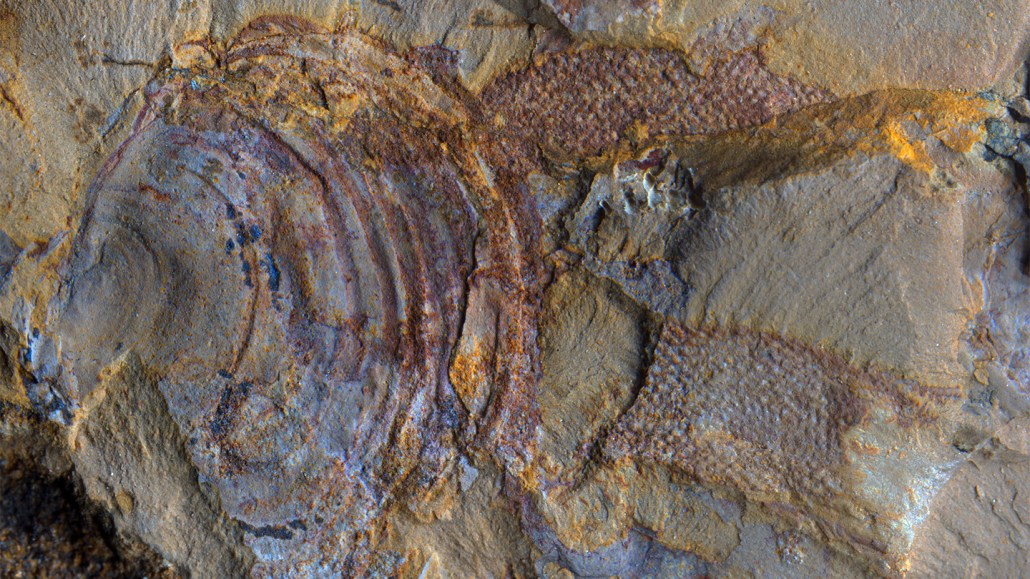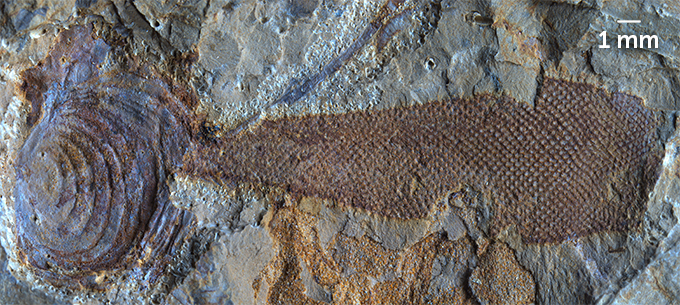520-million-year-old animal fossils might not be animals after all
The specimens may be an ancient type of algae, not creatures known as bryozoans

Protomelission gatehousei was thought to be a marine animal called a bryozoan. New fossils suggest that the ancient organisms (two dark brown pieces seen attached to a fossil shell) were actually a type of algae.
Zhang Xiguang








